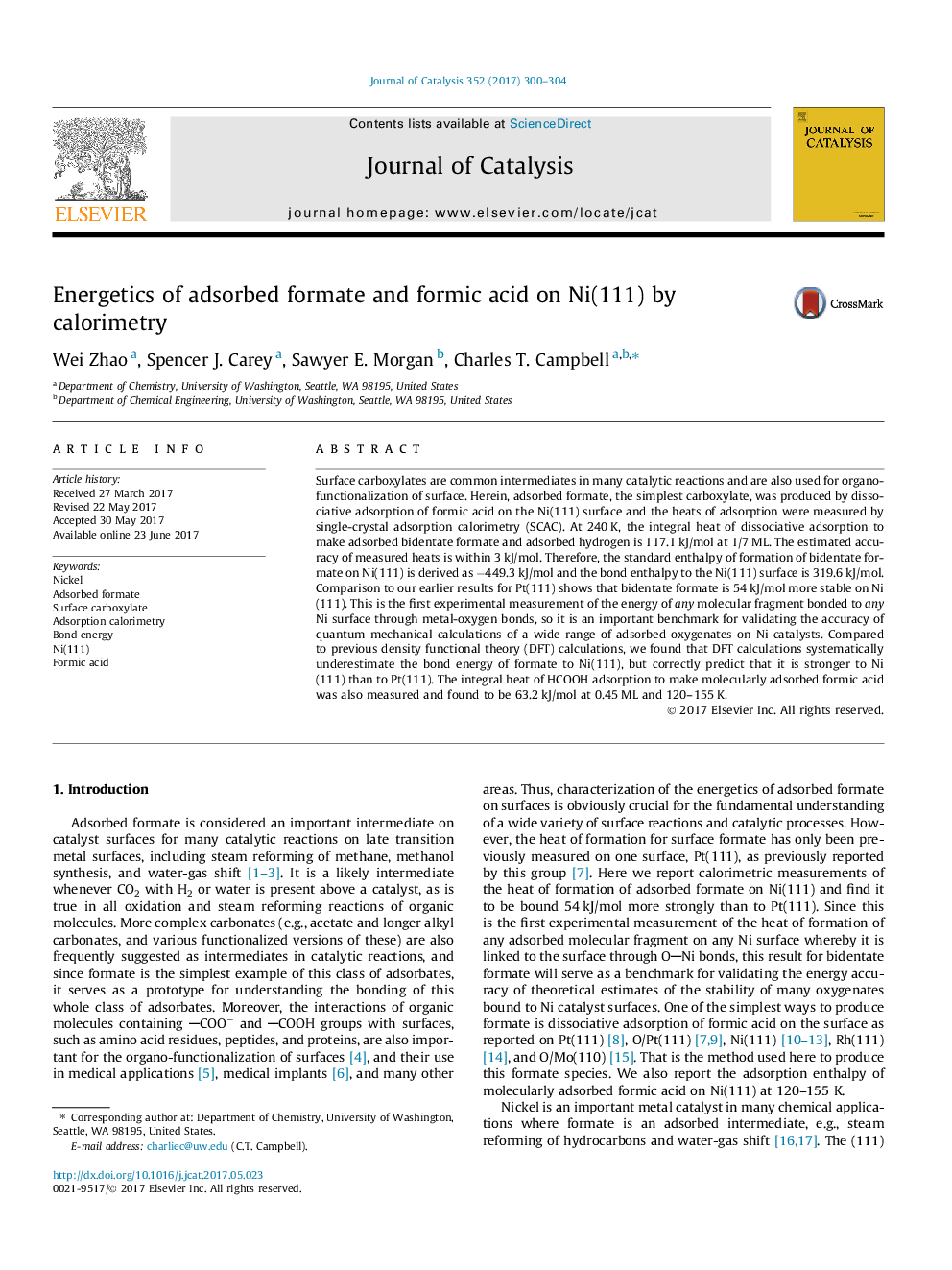| Article ID | Journal | Published Year | Pages | File Type |
|---|---|---|---|---|
| 6455397 | Journal of Catalysis | 2017 | 5 Pages |
â¢Heat of formation of bidentate formate adsorbed on Ni(111) is â449 kJ/mol.â¢First measurement of the energy of any oxygenate on Ni through metal-oxygen bonds.â¢Important benchmark for validating calculations of oxygenates on Ni catalysts.â¢The measured energies are crucial for many other important catalytic intermediates.
Surface carboxylates are common intermediates in many catalytic reactions and are also used for organo-functionalization of surface. Herein, adsorbed formate, the simplest carboxylate, was produced by dissociative adsorption of formic acid on the Ni(111) surface and the heats of adsorption were measured by single-crystal adsorption calorimetry (SCAC). At 240Â K, the integral heat of dissociative adsorption to make adsorbed bidentate formate and adsorbed hydrogen is 117.1Â kJ/mol at 1/7Â ML. The estimated accuracy of measured heats is within 3Â kJ/mol. Therefore, the standard enthalpy of formation of bidentate formate on Ni(111) is derived as â449.3Â kJ/mol and the bond enthalpy to the Ni(111) surface is 319.6Â kJ/mol. Comparison to our earlier results for Pt(111) shows that bidentate formate is 54Â kJ/mol more stable on Ni(111). This is the first experimental measurement of the energy of any molecular fragment bonded to any Ni surface through metal-oxygen bonds, so it is an important benchmark for validating the accuracy of quantum mechanical calculations of a wide range of adsorbed oxygenates on Ni catalysts. Compared to previous density functional theory (DFT) calculations, we found that DFT calculations systematically underestimate the bond energy of formate to Ni(111), but correctly predict that it is stronger to Ni(111) than to Pt(111). The integral heat of HCOOH adsorption to make molecularly adsorbed formic acid was also measured and found to be 63.2Â kJ/mol at 0.45Â ML and 120-155Â K.
Graphical abstractDownload high-res image (68KB)Download full-size image
